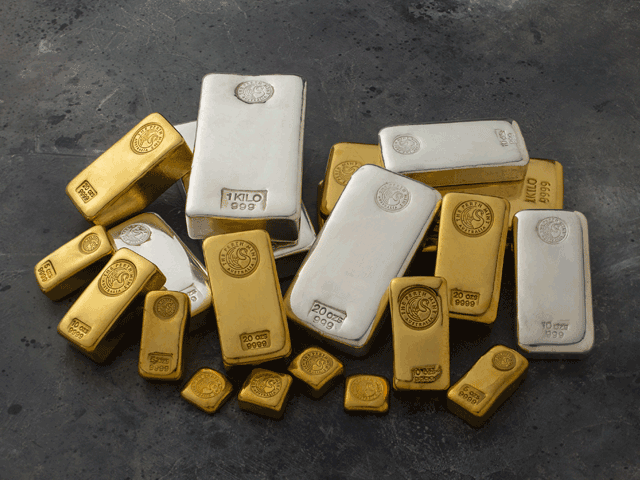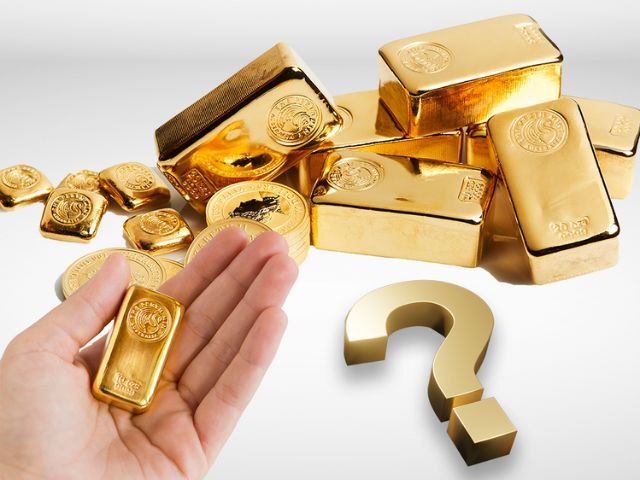How are spot prices determined?

It’s important that all investors understand how the value of their holdings is established. Most commonly marketplace trading hinges on what is known as the spot price.
The spot price is the current price in the marketplace at which a given asset, such as a security or a commodity, can be traded.
While spot prices are specific to both time and place, in today’s global economy the spot price of most assets tends to be reasonably uniform worldwide when accounting for exchange rates.
Key markets for gold and silver
There are two key markets in which the prices of gold and silver are determined.
We discuss these below and explore what a ‘fair’ price means for bullion traders in their pursuit of the best return for their metal.
1. Over-the-counter (OTC)
The over-the-counter (OTC) market consists of traders dealing directly with other traders on a one-on-one basis. it is a network of traders independently dealing with each during market trading hours.
OTC is generally meant to refer to professional/corporate entities trading 400oz gold bars (and 1,000oz silver bars), usually for settlement in London. However, when you buy a coin from a bullion dealer, you are also doing an OTC deal.
OTC trading is done on the telephone or via a dealer's proprietary trading platform software. Just like your transaction with a coin dealer, the amount dealt and the spot price agreed is not public.
This means that it is often hard to ‘pin down’ the OTC spot price given the nature of the market. Considering this, precious metal dealers commonly use a service like Reuters or Bloomberg as an indicator of where the spot price is or can rely on LBMA daily London Fix prices.
This spot price is updated by the bullion desks of the big banks and is, in effect, a bulletin board or forum where these banks can publish their prices. However, unlike a stock market, it is not a commitment to deal at those prices (but generally one can).
In comparison, the price on a public exchange such as the futures exchange is much easier to determine.
2. Futures exchanges
Futures markets are public, regulated exchanges where the price for delivery of gold or silver at various dates into the future is traded. The largest and most influential market is the US COMEX market.
Often the current (or nearest) future prices are quoted as a spot price of physical gold. This is technically incorrect as it is a price for gold or silver to settle in the future, whereas the ‘spot price’ is the current price in the market at which a given asset can be traded.
However, countries with futures exchanges dealers often base their price for immediate delivery of gold or silver off their local futures market. So, from a retail customer's point of view, a futures price is effectively the spot price.
Which market drives the gold price?
It is important to note that futures and spot prices are related to each other. As such they are kept in alignment by arbitrage traders who look at the relative costs of borrowing cash and gold (and other factors) and will sell futures and buy OTC spot (or vice versa) if they see too much divergence between the prices.
There has been some debate as to whether US futures markets, the Shanghai Gold Exchange (SGE) or the London OTC spot markets drive the price. This analysis concludes that it is not fixed and changes over time and other factors additionally impact on the price of gold, even though the London OTC market is much larger than COMEX in terms of ounces traded together these markets account for more than 90% of global trading volumes
A bullion dealer's spot price
So how do bullion dealers selling to customers set their spot price?
They do so by considering the following factors:
- The spot/futures price may change in the time between committing to a price with their customer and executing a deal with their OTC counterparty or futures market broker.
- OTC and futures markets are wholesale markets (trading in ‘lots’ of 1,000oz and 100oz of gold, respectively) whereas a dealer's retail customers will be buying in much smaller amounts. This means it may take some time before they have accumulated enough ounces to execute a deal, during which the OTC/futures price will change.
- The dealer may not be able to consider the Reuters or Bloomberg screen price when trying to lock in a price in the OTC market. This is especially possible when the market is moving quickly and bullion banks are not updating their prices into those information services quickly enough.
- For futures trading, the dealer will be charged brokerage fees. For both futures and OTC trading there is also general costs of employing dealers and settling trades.
The way bullion dealers manage the above factors is to add a margin (or buffer) to the spot or futures price they see quoted.
The spot price is dynamic, with many factors considered, like interest rates, market sentiment and geopolitical factors.
Note that this spot price margin is in addition to any fabrication premium, which represents the cost of refining gold into a required purity and manufacturing it into various forms such as bars and coins.
How do you determine a ‘fair’ price?
The result of the ever-changing factors being considered is that you will find each bullion dealer quoting different spot prices.
This can be confusing to first time investors who are used to, for example, a single price for a company's stock on a single exchange. It often leads to questions about whether they are being quoted a ‘fair’ price.
The only way to know if you are getting a fair price is to do what bullion dealers themselves must do, which is to shop around and see who is offering the best price at that time and take it. Ask if a bullion dealer is treating customers fairly and acts with integrity, is pricing and key terms transparent and easy to follow? In doing so, you become part of the huge precious metal market ‘network’ of OTC traders.
The Perth Mint
With more than 120 years’ experience in the industry, The Perth Mint has built a reputation as a trusted precious metals trader with clients in over 130 countries around the world.
Gold buyers and sellers are welcome to visit us in-store at our bullion trading desk in East Perth, Australia or trade online.
See our spot prices here. Please note as per above prices are dependent on myriad of factors including product and sales channels which may lead to differing prices.
DISCLAIMER
Past performance does not guarantee future results. The information in this article and the links provided are for general information only and should not be taken as constituting professional advice from The Perth Mint. The Perth Mint is not a financial adviser. You should consider seeking independent financial advice to check how the information in this article relates to your unique circumstances. All data, including prices, quotes, valuations and statistics included have been obtained from sources The Perth Mint deems to be reliable, but we do not guarantee their accuracy or completeness. The Perth Mint is not liable for any loss caused, whether due to negligence or otherwise, arising from the use of, or reliance on, the information provided directly or indirectly, by use of this article.










